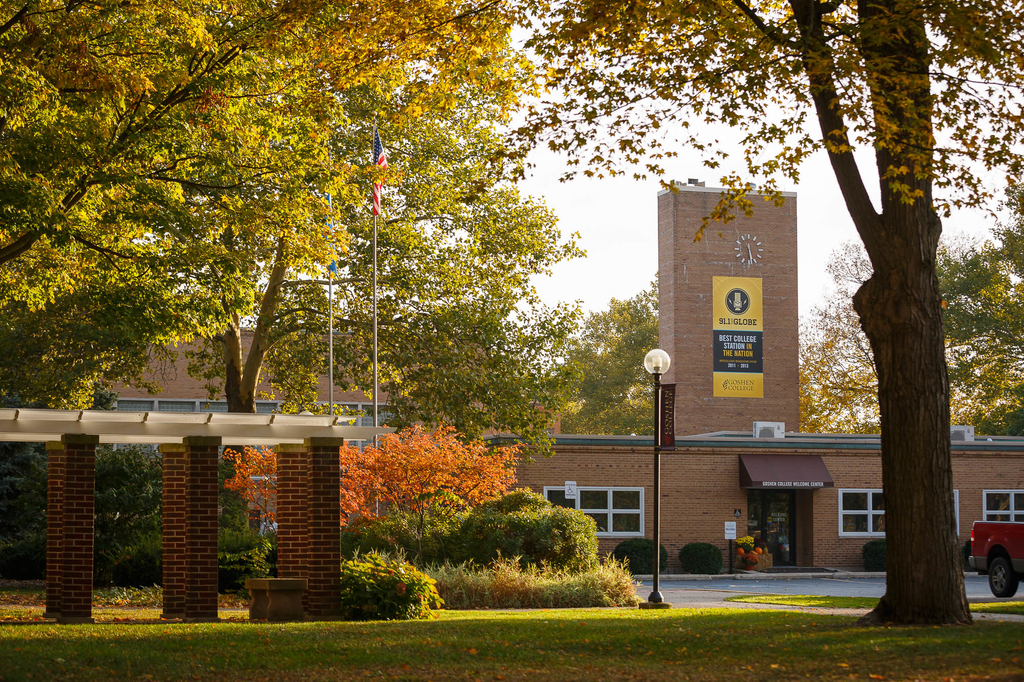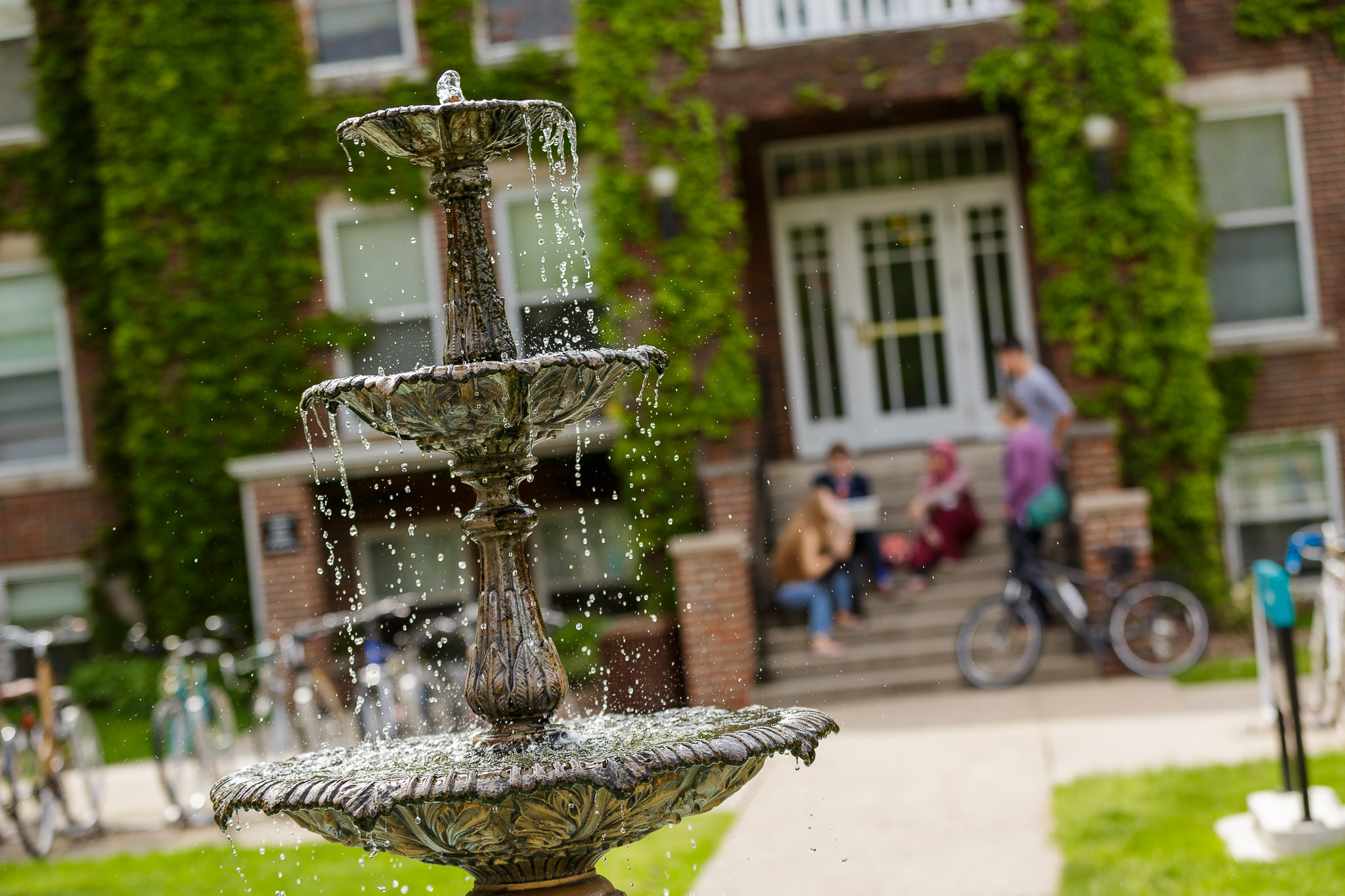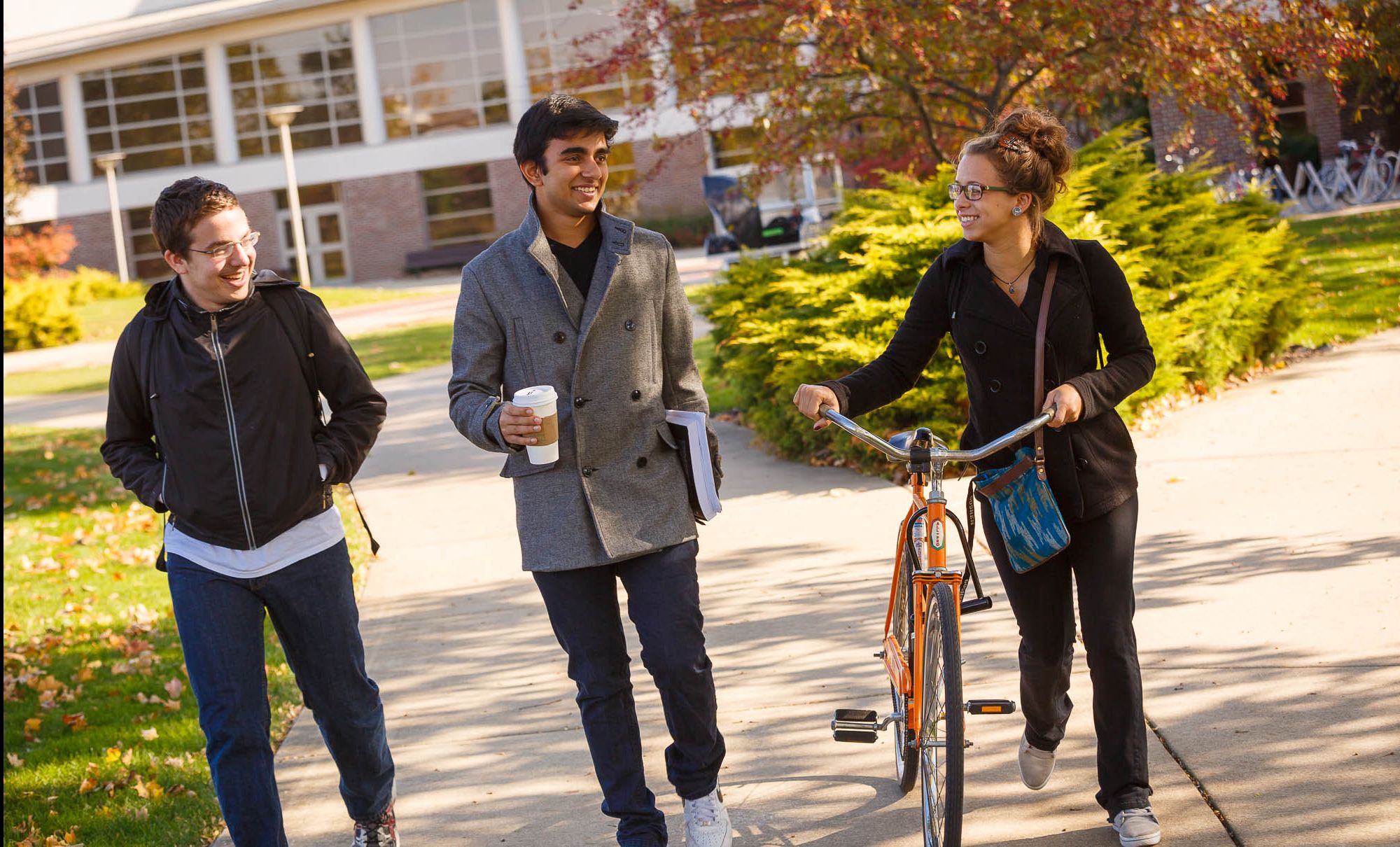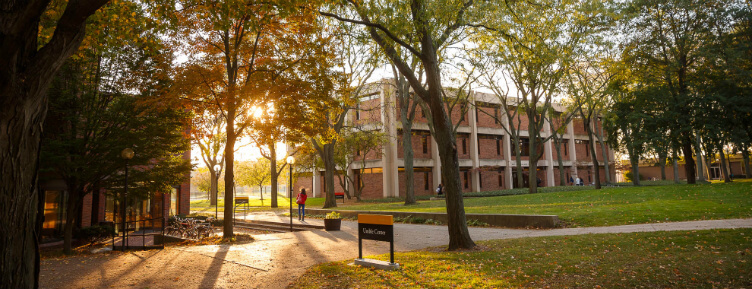By Aaliah Higereda, junior graphic design major and communication minor
After lodging at the Chain of Lakes and settling into our last location, Rieth village, located at the Merry Lea Environmental Center in Wolf Lake, Indiana, our group loaded onto the bus at 8:45 a.m. for a trip to Peru, Indiana.
Our first stop was to the old Peru high school, built in about 1938. The school was shut down in 1971 when a new high school was built. The Miami Nation of Indiana acquired the property in the 1980s.
This complex is now called the Miami Nation of Indiana Cultural Heritage Center. At the beginning, the tribe used the building to host a daycare center open to the public but they have since closed that and are focusing on creating a museum on the first floor. This museum will be open to the public and the first museum run and curated by Native Americans in Indiana. Exhibits will display Miami culture, heritage, arts, and documents of the past.
Sarah Siders, Mongosa clan member of the Miami tribe and secretary of the Miami Nation of Indiana Culture Heritage Center, warmly welcomed us into the building, leading us into the school’s gym. As we sat down, we were handed packets filled with information and history about Miami culture and different sites located in Peru that hold importance to the tribe.
Sarah explained the history of the building, Miami’s history with treaties and the ongoing fight to become a federally recognized tribal nation. It is said, in 1897, the Attorney General of Indiana accused the Miami tribe of being “too white,” as many members were living in cities and assimilating to white culture for their own survival. During this time, it was difficult for tribal members to receive government benefits because of these assumptions.
The tribe depends on donations, grants and hosting community events in the center like bingo, powwows, and a gift shop filled with jewelry, greeting cards, pottery and other items created by local Miami members for money. Getting federally recognized helps Tribal members seek better access to health care, resources, higher education, tradition and language for future generations.
I deeply appreciated Sarah’s recounts of history and her own perspective on contemporary issues like the use of Indian mascots in sports or schools or their treatment toward the LGBTQ+ in their community, as I’ve personally haven’t heard from an Indigenous person firsthand when it comes to these issues. She spoke with knowledge, kindness, and transparency that fostered a welcoming environment to truly understand Miami culture.
After our conversation, our group headed outside to walk to the Miami country museum, just a few blocks away from the Heritage center. The museum consisted of three different floors, the most interesting of them all being the circus exhibit located on the third floor.
Peru was known as a resting place for circus performers and animals during the winter season, the headquarters being a walking distance away from where Miami villages were located. With the circuses being so close, Miami villagers got the opportunity to work with exotic animals and even became performers, creating a play with costume regalia to share their culture to non-Natives.
One piece in this exhibit that sparked my interest was two different but similar related panels of a wagon that were pulled off to feature the panel’s details. Both panels featured a large circular painted portrait of a Native American man with a hand-carved buffalo and elk body’s coming from the left and right side of the portrait. Around the painting and the animals are hand-carved golden trim detailing, encapsulating the paneled wall. The only difference between both panels are the background and the choice of adding lettering onto the top.

The circus was a place for anyone and everyone, every weird or not normal thing was on display for anyone who sought the unfamiliar and unusual. People of color, different nationalities, exotic animals and incredible artistic and performance skills came together in this one place during a time of hate, prejudice and law in order to survive. The treatment of these people and animals can be seen as harmful, but at the time they were truly united as one collective.
After looking through the museum we loaded onto the bus to take the Miami driving tour to three different locations. First, we drove and walked through the burial place of Francis Godfroy, the last war chief of the Miami tribe. Throughout the cemetery other Miami and Indigenous families are buried, the recent burial being 2016.
As we headed to our next destination, we passed by what is thought to be the second mansion of Chief Richardville, the principal chief of Miami from 1812 to 1841. A few weeks ago we toured the Richardville house in Fort Wayne. This house stood around a large field of vibrant green grass and black fences compared to the one in Fort Wayne being hidden by buildings and traffic.
Our last destination was Seven Pillars, a sacred meeting place for many indigenous tribes where council meetings and even a trading post was held. As of today, the Miami Nation of Indiana owns the south bank of the Mississinewa river where they perform sacred ceremonies and their annual event, Miami Heritage day at the pillars.
As we stood across the bank of the higher than normal Mississinewa river, I took in the formation of the pillars, flaky and pale-toned like a mazapán candy, probably just as fragile. Open spaces between the pillars and the walls of the limestone create small caves, big enough to climb through.
I’m amazed at how much resilience the earth has, as these pillars continue to stand as car traffic passes on top of them. The memories within each layer of rock as animals, winds and human touch graze onto their surface. As I stood across the bank, I thought of the many Miami members of the past who also stood in the same grass, felt the cool wind or the beating sun against their cheeks as they gathered at this wonder.
Being able to connect with the Miami Nation during this trip gave me a sense of desire and determination to understand the world through an Indigenous lens instead of the Western lens I’ve grown accustomed to. We have so much to learn from both the Miami and the Pokagon tribes about the land we live on, but also creating a sustainable life where we can connect with nature and community as one.










